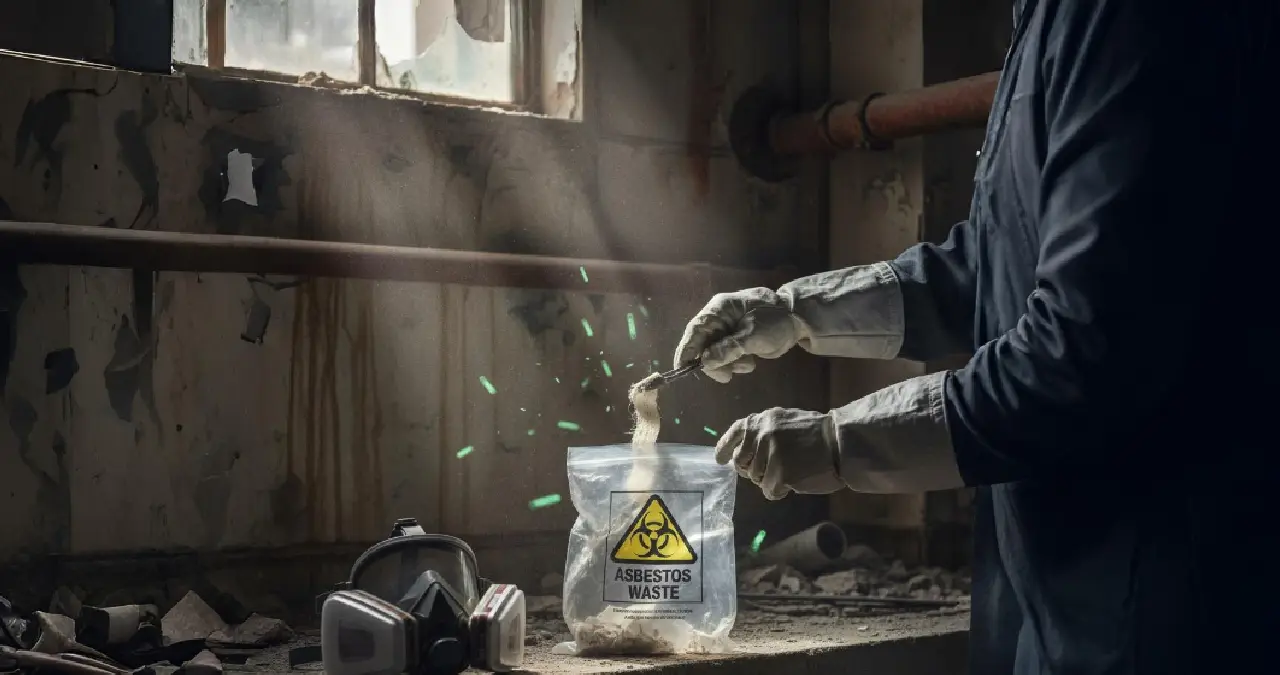Do you have any understanding of fire-resistant asbestlint, which sometimes poses a threat to construction workers when adequate safety precautions are not taken into consideration? Understanding the risks is important to mitigate the issue and ensure safer handling of this without any hazards.
It does not matter whether you are a do-it-yourself (DIY) enthusiast, contractor, or someone opting to use it; understanding safety is significant. Here in the blog, let’s explore what Asbestlint is, its application in different Industries, health dangers, and prevention of further exposure by early detection and handling. So let’s unfold the important facts of asbestlint together.
What is Asbestlint?
Asbestlint, also called asbestos tape, is nothing but a material that consists of asbestos fibers. The heat-resistant property of the material makes it ideal for use in construction. It is also used as a substance for insulation and a material for fireproofing.
Despite its heat-resistant benefits, making it ideal for construction, the health risk of the material makes it a matter for increased scrutiny for usage. Raising awareness among people helps to mitigate further exposure risk properly.
The Asbestos fibers present in it seemingly become airborne, leading to serious health complications upon air exposure over time.
Applications in Different Industries
The durability and heat resistance are properties of Asbestlint, making it suitable for use in construction for flooring and insulation. It is an ideal material used in residential or commercial projects.
Apart from construction, the material is also ideal for use in automobile manufacturing in gaskets and lining of blake for having the strength to bear high temperatures.
Sources of Asbestlint Exposure
Having a proper understanding of the hotspots of asbestos and its origin helps to mitigate further spread of it.
- Construction sites are the active hotspots for their presence.
- During Renovations and Demolitions, it is released into the air for cutting and drilling materials that presence asbestos.
- Wall Panels and Ceiling also contained asbestos.
- When damaged, the flooring material and roofing substance also release asbestos fibres.
- During the time of deterioration with old insulation, like boilers and pipes, they also contain asbestos material.
Associated Health risks
The invisibility to detect it at an earlier stage makes the health consequences disastrous. It seems like normal dust with the naked eye, but actually, the microscopic fibre has the potential to penetrate deeper into your lungs during inhalation. This fibre within it causes severe respiratory complications and severe diseases like lung carcinoma, mesothelioma, and asbestosis.
It’s also associated with occupational hazards on construction sites, while site workers face severe consequences with the higher exposure. The diseases caused by its exposure take years of time, sometimes for decades, to manifest, making the early diagnosis very challenging.
For vulnerable children and people having pre-existing health complications, even short-term exposure seems lethal. The victim experiences persistent issues of coughing and shortness of breath as it attacks the lungs directly. It does not degrade or dissolve in water, and after its release, it carries the particles in the air for a long time.
For construction workers, who encountered exposure to it while carrying the fibres from job sites to home through their clothes, causing an unintentional spread of the particles among their family members. Meanwhile, it also led to pleural thickening and plaques. The longer latency period of the exposure makes the early detection challenging, as it sometimes takes years for manifestation.
Detection and Handling
While detecting asbestos, careful handling is crucial to ensure safety. The careful detection requires specialized equipment and safety training to deal with the spread of it properly. Professionals must leverage transmission electron microscopy (TEM) and polarized light microscopy (PLM) for accurate detection of asbestos fibre.
If anything seems suspicious, always seek assistance from certified experts for further testing by not indulging the attempt of a DIY assessment. While working near sites having asbestos materials, wearing personal protective equipment (PPE) is mandated.
Wearing gloves and respirators helps prevent the asbestos particles from entering your lungs and skin. Making the construction site well-ventilated helps with airflow management to curtail the spread of airborne fibers.
Preventing Exposure by regulations
Many countries have taken stringent action to ban asbestos. In the United States, the Occupational Safety and Health Administration (OSHA) and the United States Environmental Protection Agency (EPA) have enforced strict regulations to put an end to occupational exposure led by asbestos.
Meanwhile, the European Union also implemented a ban on materials containing asbestos. Countries which are not yet implemented the ban are facing vulnerability with the health of the workforce with close contact with its exposure.
Asbestos exposure can lead to certain legal consequences for employers if workers have experienced health issues with asbestos. The victims lodged grievances and filed lawsuits seeking compensation. Companies even undergo issues with hefty fines if unable to meet the careful handling of asbestos. The legal action against the company can even erode the reputation of the firm.
Why Awareness is necessary
For public health safety, raising awareness helps to promote safer practices and minimize exposure to the risks associated with hazardous substances. Keeping the communities educated is fundamental to minimizing the risk of unsafe exposure to Asbestlint. Raising awareness also helps to take immediate action before their further escalation.
Some Safer Alternatives
Many industries are looking for a viable alternative to Asbestlint by giving priority to the occupational health and safety of workers. Cellulose insulation, fiberglass, and mineral wool are the best viable alternatives are attaining increased traction in recent times with their heat resistance property, with no further risk.
This viable alternative is a harmless fiber that helps to reduce exposure to this, making it a safer alternative. This is how sustainability is thoroughly managed by embracing safer Alternatives to this.
The Importance of Hiring Professionals
Handling asbestos entails the role of a professional who has adequate expertise to leverage the necessary tools for safe management of this material, helping to protect the health of occupational workers from risk.
Using a DIY approach is not a safer alternative, and it requires the role of professional expertise who know how to handle it without putting anyone at risk. Hiring a professional also gives you mental peace in knowing the action will be performed with precision by someone whom having the expertise to tackle this.
Wrapping up
There has been a noticeable shift in asbestlint alternatives to bypass the danger associated with its exposure risk. All that is needed is to take a pledge by not allowing it to pose a risk to construction workers any further. It is also expected that the shift to the safer alternatives won’t compromise the workers’ health and public safety in the near future.

